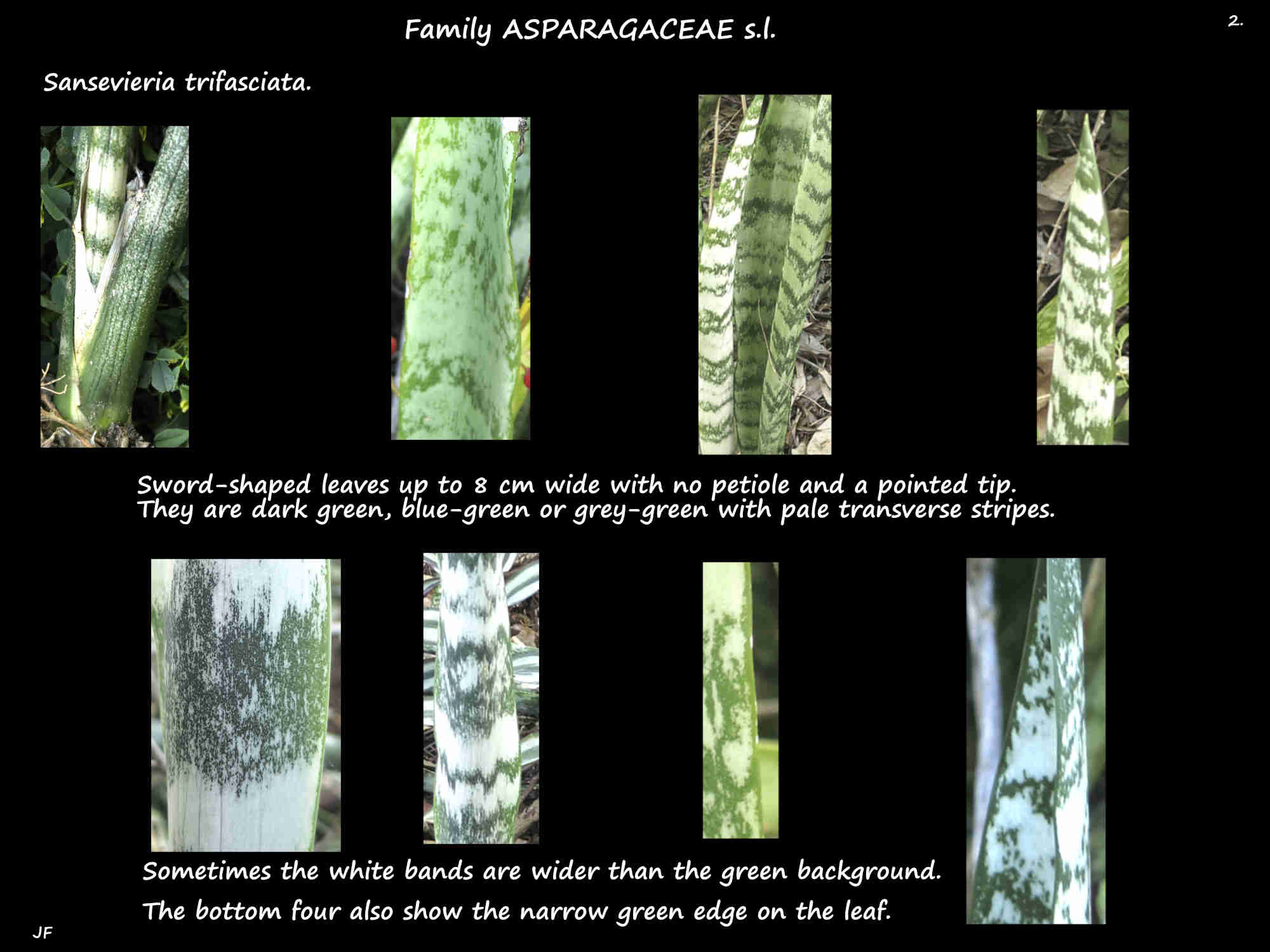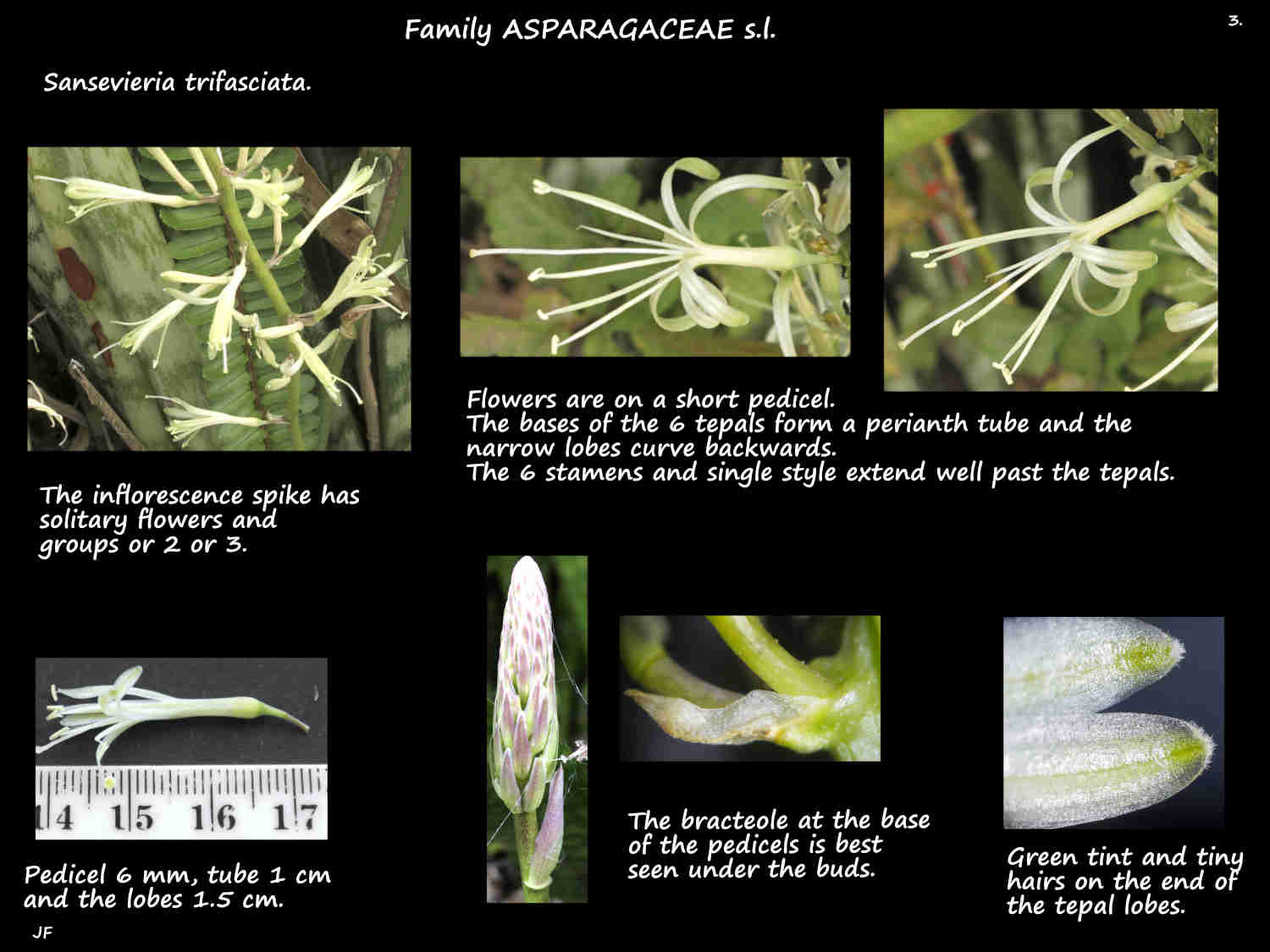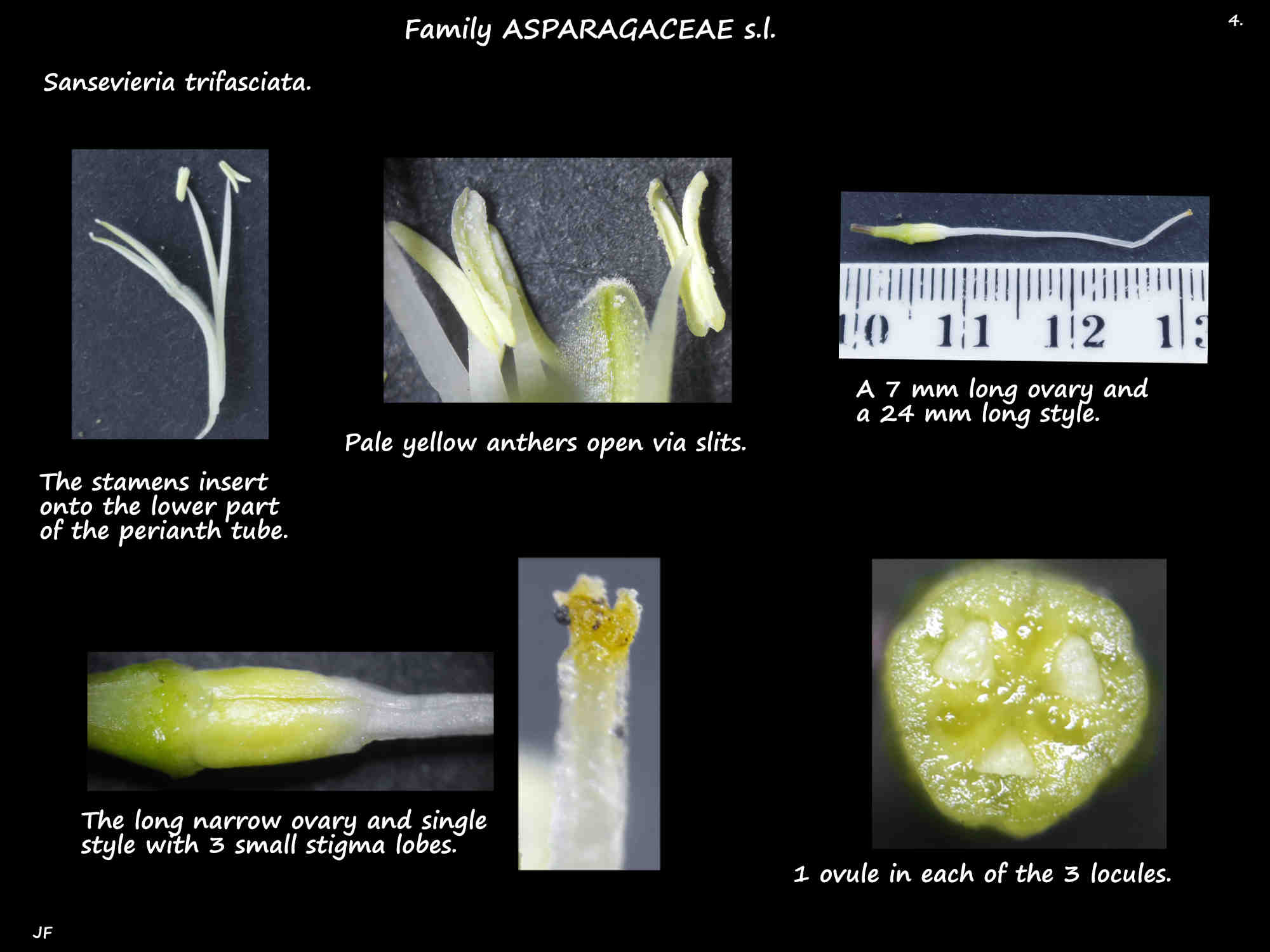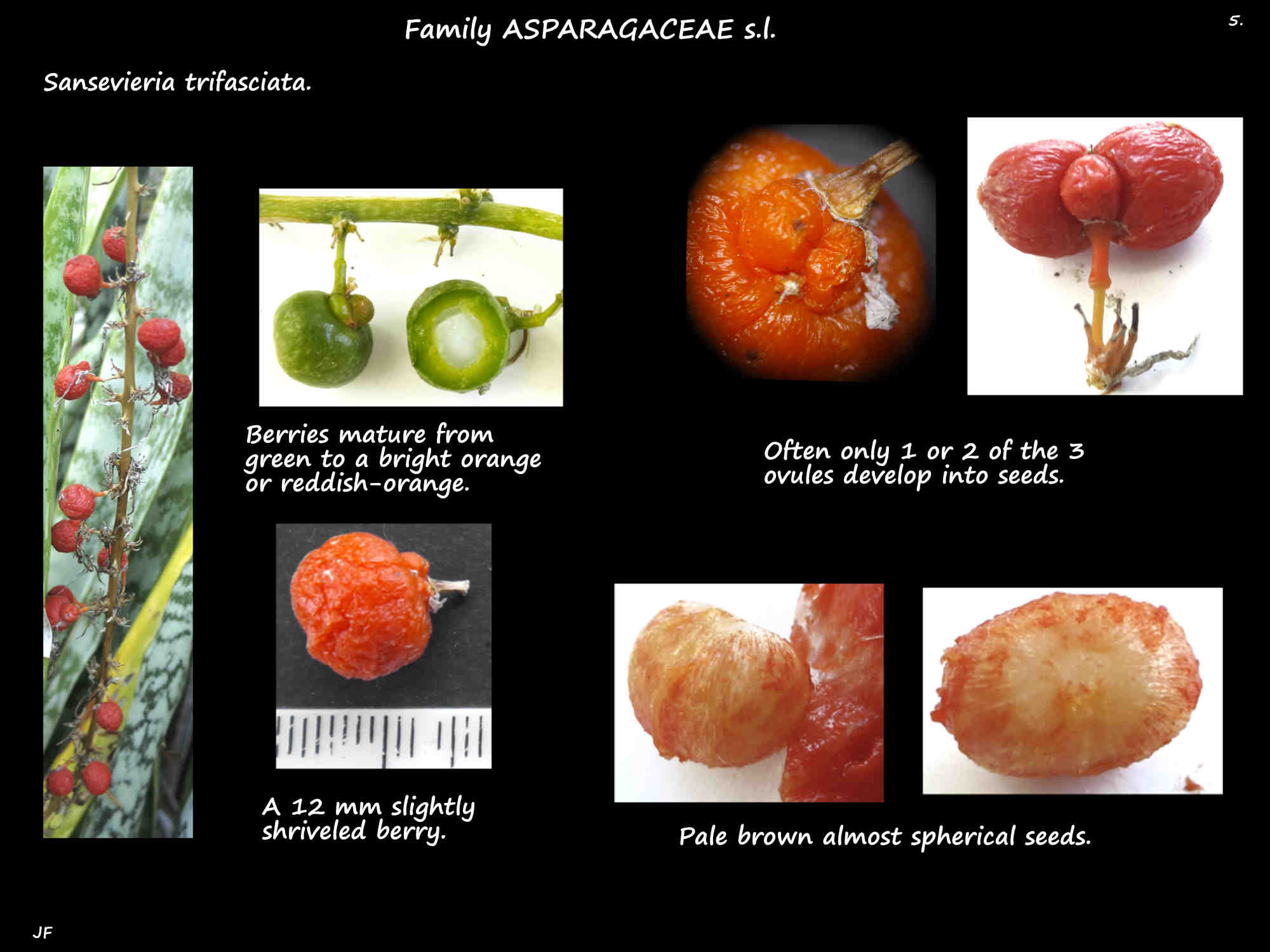Sansevieria trifasciata.
The classification of the over 50 species of Sansevieria is not universally settled.
It is seen under families Aspargaceae (The Plant List, Mabberley and Gardening Australia’s Flora),
Dracaenaceae (in New South Wales and Queensland) as well as Liliaceae and Agavaceae.
Mother-in-law’s tongue, native to Africa is widely naturalised in S.E. Queensland where it is an environmental weed.
They are herbaceous plants with leaves growing from fleshy orange rhizomes (underground stems).
Offsets growing from the rhizomes eventually form a dense clump.
Leaves grow, in basal rosettes of up to 6, from the nodes on the rhizomes.
The erect, succulent leaves are around 1.5 to 1.8 m high and up to 7 or 8 cm wide.
They are sword-shaped or lanceolate with no petiole, a sharp tip and a wavy edge.
Both surfaces are dark green, blue-green or a greyish-green with distinct, pale transverse bands and a narrow
dark green (occasionally yellow) edge.
One inflorescence spike, up to 75 cm long grows from the centre of each rosette.
The flowers are in groups of up to 3 along the end of the spike.
Up to 3 cm long the flowers are on 7 mm pedicels.
The base of the 6 tepals are fused for around 1 cm and the narrow lobes curve backwards.
They are white and may have a green or yellowish tint.
The 6 stamens are 8 mm long.
The superior ovary can be nearly 2 cm long and it has 3 locules.
The style, nearly as long as the ovary holds a small stigma.
The fruit are berries almost 1 cm long that mature from green to orange.
It has up to 3 pale seeds – one from each locule in the ovary.
Most reproduction is vegetative from the rhizomes.
There are some cultivars.
J.F.






